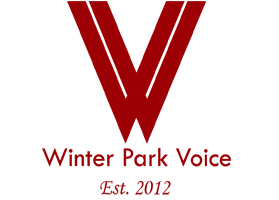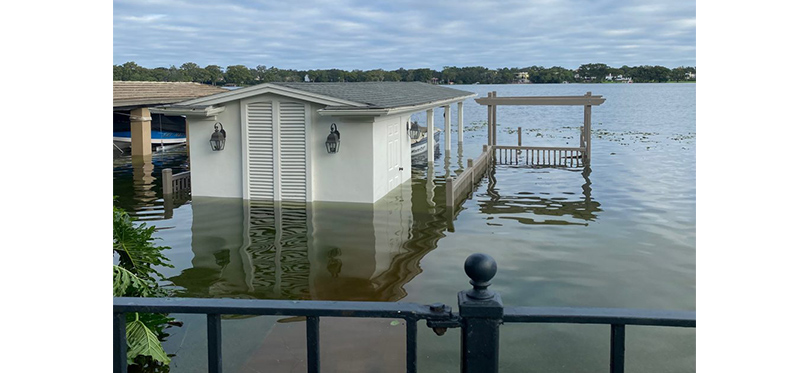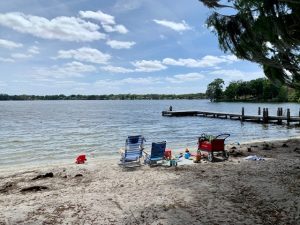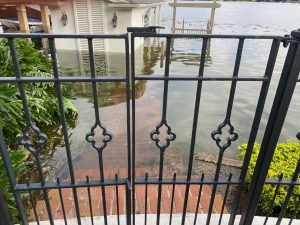Extreme weather is wreaking havoc on Winter Park Chain of Lakes
From the deluge of rain brought by Hurricane Ian to more recent drought-induced algae blooms, the city’s prized lakes are feeling the effects of a warming climate
By Beth Kassab
The Winter Park Chain of Lakes flows north through the city, connecting mile after mile of multi-million- dollar home lots, the Spanish Mediterranean architecture of Rollins College and some of the most popular public docks in the region.
Lakes Virginia, Mizell, Osceola and Maitland – linked by a series of picturesque canals — are at the heart of what makes Winter Park home to some of the most desirable real estate in Florida.
But extreme weather in the last six months brought first by Hurricane Ian and, now, a sustained drought have pointed to the chain of lakes as a symbol of something potentially ominous: severe inland flooding followed by persistent hazardous algae blooms.
“It’s a perfect storm for Florida,” said Gloria Eby, Winter Park’s director of Natural Resources and Sustainability. “If you look at the state’s map for algae bloom sites, you can see dots all over the state of Florida. We’re not in this alone. But it is newer for Winter Park. Our weather pattern has a severe impact on when and where we see this and we’re seeing the intensities from extreme drought to extreme rain.”
Dinky Dock on Lake Virginia, a popular boat ramp open to the public, was closed for four weeks in February and March because of algae blooms that can be toxic to people and dogs. Lakes Virginia, Osceola, Maitland, Sue and Baldwin are now open, but remain under a caution because blooms can move and reappear.
The lack of rain along with hotter than typical temperatures can feed conditions that worsen the blue-green blooms. Samples are regularly collected by the Florida Department of Environmental Protection from problem areas.
Eby said the absence of rain has depleted lake levels and water is barely trickling over the weirs that help control the elevation in the chain of lakes. Without a steady flow of rain, runoff contaminated with nutrients from fertilizer and other sources remain in the lakes and ripen the conditions for algae.
“We need that base rain flow to push out the nutrients,” she said.
Orlando only saw 1.89 inches of rain since the start of the year, more than 5 inches less than normal, according to the National Weather Service. Sanford saw 3 inches, more than 4 inches below normal.
That’s the opposite of the problem the region saw after Hurricane Ian dropped 13.7 inches of rain on Orange County during a 12-14-hour period on Sept. 29 with some areas logging as much as 18 inches of rain, according to Winter Park’s post-storm report. That analysis noted the storm caused sewer overflows that “exposed the vulnerability of the city’s stormwater and waste water systems that are not built or designed to handle this amount of continued rainfall.”
The lake levels rose and nearby docks, homes and streets were flooded.
Pamela Peters has lived in her house on Lake Osceola for 42 years and had never experienced such high water levels as she did immediately after Ian.
Her dock was under water for weeks and her boat house flooded.
“We had never seen this,” said Peters, a former city commissioner. “My concern is that our city leaders are thoughtful about the events and changes in climate and are anticipating and planning what’s next.”
Some potential changes are already in motion.
Eby said city staff has met with the St. Johns River Water Management District, a state agency charged with regulating water bodies and protecting drinking water, to determine if the two fixed weirs that control the water levels on the chain of lakes could be made adjustable in the future.
That could be controversial because if there is too much outflow from the lakes in Winter Park then areas downstream in Seminole County such as Lake Howell could flood. But some ability to adjust the water levels might also be helpful in controlling flooding during storms, Eby said.
“There’s more intensity and more frequency to these storms so it’s really testing the abilities of this entire infrastructure,” said Gloria Eby, Winter Park’s director of Natural Resources and Sustainability. “Inland areas are starting to see a lot more effects with flooding and higher water elevation.”
City staff are also working on a study to determine the sources of nutrients contributing to algae blooms and how to combat them, she said.
And Eby’s department wants to educate residents who live on the lakes about how to take care of them such as the safest fertilizers to use and simple steps such as making sure grass clippings and leaves are not blown into the water.
Earlier this year the city held a meeting with lakefront homeowners in an effort to provide more communication about what’s happening and how they can help.
That means bagging yard waste instead of blowing it, following fertilizer guidelines and protecting native aquatic plants near the shoreline, which function as kidneys to the lakes by filtering out toxins.
“We need our lake communities to be strong stewards of the lakes,” she said.




Great and informative article. Wish they would send that out in city reports that we get with our utility bills so that everyone has an opportunity to see it.
I echo Jean’s comments and also agree this information needs to be printed in the city report accompanying our utility bills for all Winter Park residents to read and to be adequately informed. As a resident of Winter Park for over 60 years, I have never before experienced such an unprecedented amount of rainfall and flooding from Hurricane Ian in Winter Park. I also do not ever recall experiencing such extremely warm weather this early in the year as we are having this spring.
I agree with Jean and Bonnie. There are several things we must consider:
1. The Cities Infrastructures is inadequate to handle the oversized homes that are being constructed today.
2. The meanspirited/sinful ways of man cause a lot to happen in our lives. Now before you go crazy, many of you read Bibles and go to church so, you know what I am saying is correct.
3. Let’s make Winter Park “A city that truly Love and Respect God and each other. Our ways and actions will tell! Peace I Leave with you!